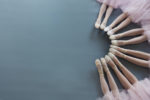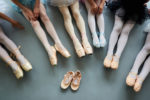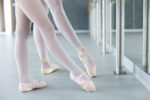History of Ballet Shoes
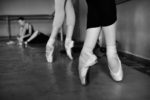
Because the audience expects no less than perfection, ballet dancing requires plenty of discipline.
Ballerinas look like delicate and weightless beings when performing on stage. And their flawless performance is partly because of their dancing shoes.
Let’s check the history of ballet shoes and see what’s so unique about this dance footwear.
Where did they originate from, and who invented ballet shoes?
Who Invented the Ballet Shoe?
Charles Didelot is the person responsible for the creation of flat ballet shoes.
Back in the day, dancers wore heeled dance shoes. But by removing these heels, ballerinas are now able to do leaps.
These flat-bottomed dance shoes are then secured to the feet using ribbons.
He also added materials to the forefront to allow ballerinas to dance on tiptoe.
The problem with this creation is that it lacks the correct structure to protect the dancer’s feet from injury.
After all, it was just dancing slippers made from satin with a leather outsole.
For this reason, a Danish choreographer named August Bournonville decided to enhance its design.
He put a white V-shaped vamp on the black male ballet slippers’ front to give an illusion of a pointed and long foot.
The Russian ballerina Anna Pavlova suffered from several injuries, so she modified ballet shoes to lessen the painful experience.
She added hardened leather soles and a flattened-bottom toe area, creating a box for the toes. This is what made it the forerunner for pointe shoes.
History of Ballet Shoes
The King of France Louis XIV ordered the Royal Academy of Dance’s foundation in March 1661, becoming the first Western dance institution.
The women’s ballet began in France in 1861, where female dancers wore heeled dancing shoes.
Where Did Ballet Shoes Originate From?
The mid-18th-century French dancer named Marie Camargo from the Paris Opera Ballet wore the first non-heeled dancing shoes.
The French revolution then paved the way for ballerinas to start wearing non-heeled dancing shoes.
The French dancer Charles-Louis Didelot, who invented ballet shoes without heels in 1975, added ribbons to secure the footwear to the feet.
Marie Taglioni is an Italian ballet dancer who was tagged as the first ballerina to dance en pointe during her “La Sylphide” performance.
She wore modified satin slippers with a leather outsole but lacked enough toe support.
When Did Ballerinas First Start Wearing Pointe Shoes?
Amalia Brugnoli, an Italian dancer, first introduced pointework to the ballet world in 1823 during La Fee et le Chevalier’s performance.
As a result, other dancers took inspiration and started practicing the technique.
In 1832, Marie Taglioni became the first ballerina to dance en pointe in La Sylphide.
She wore tight-fitting ballet satin slippers with leather soles and ribbons tied around the ankle for security.
During the 19th century, Italian shoemakers bolstered pointe shoes by creating a rigid box out of flour paste, newspaper, and pasteboard and added leather to the insole.
Then, in the early 20th century, Anna Pavlova modified her ballet shoes for added support.
When she traveled to the USA in 1910, her company commissioned Salvatore Capezio for shoe outfitting.
This shoemaker from the Metropolitan Opera in New York became the first known pointe brand in the international scene.
In recent years, pointe shoe manufacturers combined modern materials and scientific approaches to enhance their designs.
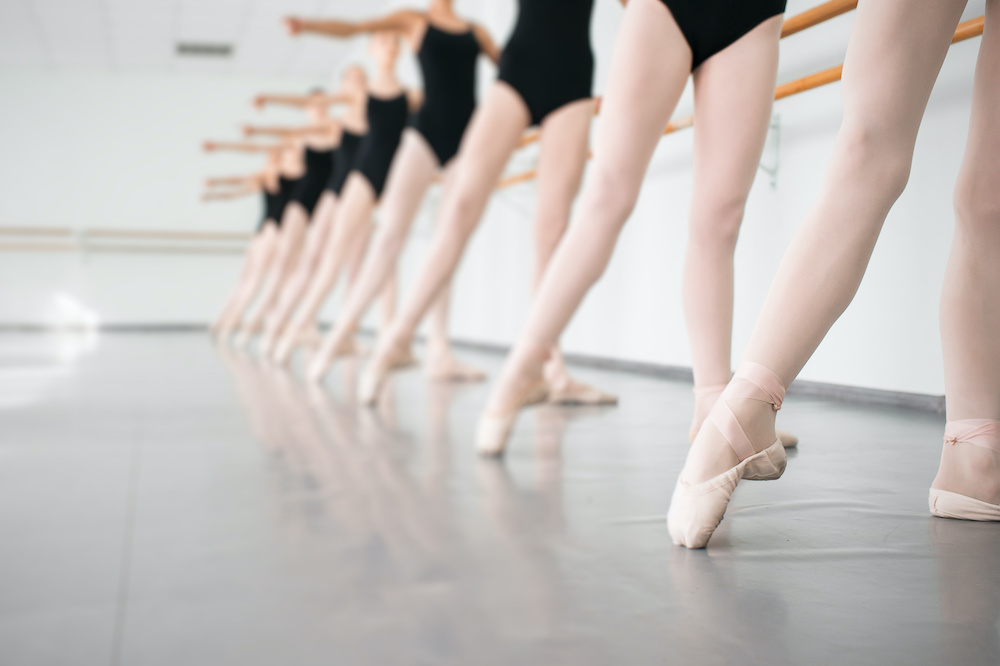
Facts About Ballet Shoes
Ballet shoes are lightweight and dainty footwear that looks beautiful on a ballerina’s feet.
From toddlers to adults or from beginners to professionals, there is a lot to know about these shoes.
Interestingly, there are some facts about ballet shoes that some of us are not familiar with yet.
1. Ballet shoes don’t have a left or right side.
A pair of ballet shoes fit either of the dancer’s feet.
It’s the ballerina’s responsibility to choose which shoe goes to the left and right foot after buying it.
It’s best to mark the shoes accordingly to prevent interchanging them as each foot is different from the other.
This process will also allow the shoes to conform to your feet’s shape, making them more comfortable to wear.
2. Ballet shoes have elastic bands.
Some brand-new ballet shoes don’t come with pre-attached elastics.
This accessory secures the footwear to the dancer’s feet.
Dancers can sew them to the right spot based on their preference for added comfort and safety.
3. Ballet shoes for jazz.
Ballet shoes are similar to jazz footwear except for the small heel on their back.
Some dance schools allow their students to wear jazz shoes for ballet classes.
However, the small heel may hinder some ballet steps, thus, prohibited in schools with more strict guidelines.
Facts About Pointe Shoes
Similar to ballet shoes, there are many facts about pointe shoes that are worth knowing.
1. Pointe shoes have a short lifespan.
Ballet shoes, especially pointe, the ones used by professional ballet dancers, may last between two to 20 dance hours.
The shelf life’s length depends on the dancer’s level of expertise and how they take care of their ballet shoes.
The demands of a particular performance also affect the longevity of a dancer’s footwear.
2. Ribbons are not pre-sewn.
Most ballerina shoes don’t come with pre-sewn ribbons, allowing the dancers to customize them by sewing them depending on where they want them placed.
3. Ballerinas wear customized shoes.
Professional ballerinas don’t wear brand-new pointe shoes until after completing some process to make them usable according to their preference.
They pound the toe box and pop or step on the shank to soften these parts and prevent making noises during the performance.
4. Modern pointe shoes came out in the 20th century.
It was the Russian ballerina Anna Pavlova who introduced the blueprint for the modern pointe shoes.
The modifications she made on her ballet shoes gave manufacturers an idea of designing comfortable shoes for ballet performances.
5. Pointe shoes are handmade.
Most professional ballerinas use custom-made ballet shoes according to their feet’s exact specifications.
Dancers also put in ribbons and elastics on their shoes for a more customized fit.
Ballet Shoes History
When women began dancing ballet in 1682, they wore heeled shoes that limit their movement.
To address this, ballet shoes went through several modifications to become what they are now—an elegant piece of footwear that gives dancers support and protection.
Knowing the history of ballet shoes gives us a better understanding of how this delicate footwear is made and how it works.
It allows us to appreciate the hardships these ballerinas go through to provide us with their flawless performances.


